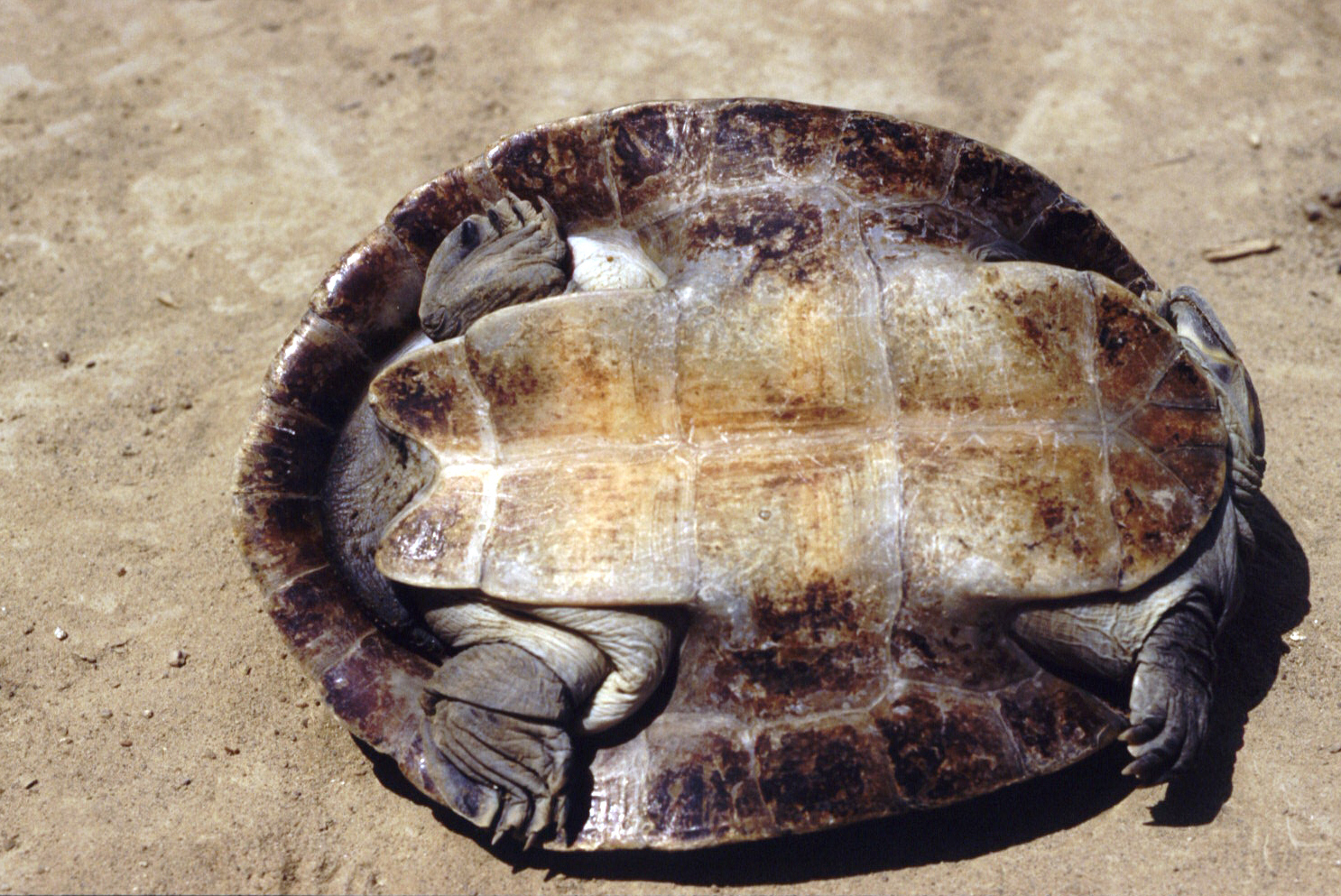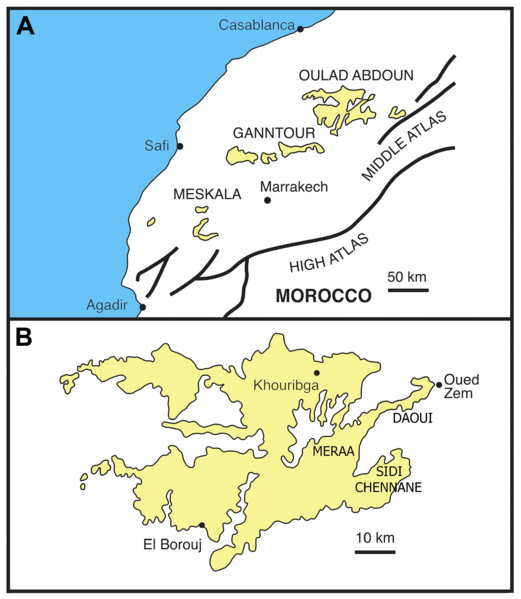|
Bothremydidae
Bothremydidae is an extinct family of side-necked turtles (Pleurodira) known from the Cretaceous and Cenozoic. They are closely related to Podocnemididae, and are amongst the most widely distributed pleurodire groups, with their fossils having been found in Africa, India, the Middle East, Europe, North America and South America. Bothremydids were aquatic turtles with a high morphological diversity, indicative of generalist, molluscivorous, and piscivorous diets. Unlike modern pleurodires, which are exclusively freshwater, bothremydids inhabited freshwater, marine and coastal settings. Their marine habits allowed bothremydids to disperse across oceanic barriers into Europe and North America during the early Late Cretaceous (Cenomanian). The youngest records of the group are indeterminate remains from Saudi Arabia and Oman, dating to the Miocene. Taxonomy The family is split into two subfamilies and a number of tribes. Bothremydidae *'' Pleurochayah appalachius'' Adrian et al. ... [...More Info...] [...Related Items...] OR: [Wikipedia] [Google] [Baidu] |
Podocnemididae
Podocnemididae is a family of pleurodire (side-necked) turtles, once widely distributed. Most of its 20 genera and 30 species are now extinct. Seven of its eight surviving species are native to South America: the genus '' Peltocephalus'', with only one species (''P. dumerilianus'', the big-headed Amazon River turtle); and the genus '' Podocnemis'', with six living species of South American side-necked river turtles. There is also one genus native to Madagascar: '' Erymnochelys'', the Madagascan big-headed turtle, whose single species ''E. madagascariensis''. Like other pleurodire turtles, podocs have a "side-necked" defensive posture, turning the head sideways to hide it under the shell. Another characteristic of pleurodires is that the pelvis is fused to the shell which prevents pelvic motion, making it difficult to walk on land. Podocnemididae turtles live in aquatic environments and have shells streamlined to aid in swimming. Taxonomy and systematics According to Ferreira ... [...More Info...] [...Related Items...] OR: [Wikipedia] [Google] [Baidu] |
Araiochelys
''Araiochelys'' ("narrow turtle") is an extinct genus of bothremydid pleurodiran turtle that was discovered in the Ouled Abdoun Basin, Morocco.E. S. Gaffney, H. Tong, and P. A. Meylan. 2006. Evolution of the side-necked turtles: The families Bothremydidae, Euraxemydidae, and Araripemydidae. Bulletin of the American Museum of Natural History 300:1-318 The genus consists solely of type species In zoological nomenclature, a type species (''species typica'') is the species name with which the name of a genus or subgenus is considered to be permanently taxonomically associated, i.e., the species that contains the biological type specime ... ''A. hirayamai''. Discovery ''Araiochelys'' was discovered in the Ouled Abdoun Basin of Morocco, primarily known for its Maastrichtian and Paleocene fossils. Description The preorbital section of ''Araiochelyss skull is narrower than in all other members of the Bothremydini. The dorsal process is noted by the describers as being narro ... [...More Info...] [...Related Items...] OR: [Wikipedia] [Google] [Baidu] |
Side-necked Turtles
The Pleurodira are one of the two living suborders of turtles, the other being the Cryptodira. The division between these two suborders represents a very deep evolutionary divide between two very different types of turtles. The physical differences between them, although anatomical and largely internal, are nonetheless significant, and the zoogeographic implications of them are substantial. The Pleurodira are known more commonly as the side-necked turtles and the name Pleurodira quite literally translates to side neck, whereas the Cryptodira are known as hidden-necked turtles. The Pleurodira turtles are currently restricted to freshwater habitats in the Southern Hemisphere, largely to Australia, South America, and Africa. Within the Pleurodira, three living families are represented: Chelidae, also known as the Austro-South American side-necked turtles, the Pelomedusidae, also known as the African mud terrapins, and the Podocnemididae, also known as the American side-neck river tu ... [...More Info...] [...Related Items...] OR: [Wikipedia] [Google] [Baidu] |
Sindhochelys
''Sindhochelys'' is a genus of extinct turtle of the family Bothremydidae. It lived during the early Paleocene in what is known Sindh, Pakistan. The genus was discovered in the Khadro Formation and named in December 2021. The genus represents the first known member of its family in Pakistan. The family Bothremydidae lived from the Cenomanian of the early Cretaceous to the Miocene epoch. Discovery The turtle was discovered in the Paleogene aged Khadro Formation, which is located near the Ranikot Fort area of Pakistan. The formation also contains the remains of the giant snake Gigantophis which was discovered in 1901 by Charles William Andrews Charles William Andrews (30 October 1866 – 25 May 1924) F.R.S., was a British palaeontologist whose career as a vertebrate paleontologist, both as a curator and in the field, was spent in the services of the British Museum, Department of Ge .... References {{Taxonbar, from1=Q110235809, from2= Bothremydidae Paleocene turtl ... [...More Info...] [...Related Items...] OR: [Wikipedia] [Google] [Baidu] |
Bothremys
''Bothremys'' is an extinct genus of bothremydid pleurodiran turtle that was discovered near Gloucester, New Jersey New Jersey is a state in the Mid-Atlantic and Northeastern regions of the United States. It is bordered on the north and east by the state of New York; on the east, southeast, and south by the Atlantic Ocean; on the west by the Delaware ....Leidy, J., 1865 "Cretaceous reptiles of the United States." Smithsonian Contributions to Knowledge 192:1-135 https://doi.org/10.5962/bhl.title.39830 The genus consists of type species ''B. cooki'', ''B. arabicus'', ''B. kellyi'', and ''B. maghrebiana''. Discovery The holotype of ''Bothremys'' was discovered in the greensand formations near Gloucester Township, New Jersey. It consists of a partially-complete skull and a lower jaw. Description In Leidy's 1865 description, he notes that the skull lacks the auditory passages, zygomatic arches, and some other minor bones. The lower jaw completely lacks the condyloid ... [...More Info...] [...Related Items...] OR: [Wikipedia] [Google] [Baidu] |
Pleurochayah
''Pleurochayah'' is an extinct genus of bothremydid turtle from the Lewisville Member of the Woodbine Formation The Woodbine Group is a geological formation in east Texas whose strata date back to the Early to Middle Cenomanian age of the Late Cretaceous. It is the producing formation of the giant East Texas Oil Field (also known as the "Black Giant") fr ... in Texas. It is monotypic, with only type species ''P. appalachius'' known.Adrian, B., Smith, H.F., Noto, C.R. et al. An early bothremydid from the Arlington Archosaur Site of Texas. Sci Rep 11, 9555 (2021). https://doi.org/10.1038/s41598-021-88905-1 References {{paleo-turtle-stub Fossil taxa described in 2021 Prehistoric turtle gen ...[...More Info...] [...Related Items...] OR: [Wikipedia] [Google] [Baidu] |
Woodbine Formation
The Woodbine Group is a geological formation in east Texas whose strata date back to the Early to Middle Cenomanian age of the Late Cretaceous. It is the producing formation of the giant East Texas Oil Field (also known as the "Black Giant") from which over 5.42 billion barrels of oil have been produced. The Woodbine overlies the Maness Shale, Buda Limestone, or older rocks, and underlies the Eagle Ford Group or Austin Chalk. In outcrop the Woodbine Group has been subdivided into the Lewisville Sandstone, Dexter Sandstone, and/or Pepper Shale formations. Thin-bedded sands of the Woodbine and Eagle Ford are collectively referred to as the "Eaglebine" oil and gas play in the southwestern portion of the East Texas region. Dinosaur and crocodilian remains are among the fossils that have been recovered from the formation.Weishampel, David B; et al. (2004). "Dinosaur distribution (Late Cretaceous, North America)." ''in'' Weishampel, David B.; Dodson, Peter; and Osmólska, Halszka ... [...More Info...] [...Related Items...] OR: [Wikipedia] [Google] [Baidu] |
Ouled Abdoun Basin
The Oulad Abdoun Basin (also known as the Ouled Abdoun Basin or Khouribga Basin) is a phosphate sedimentary basin located in Morocco, near the city of Khouribga. It is the largest in Morocco, comprising 44% of Morocco's phosphate reserves, and at least 26.8 billion tons of phosphate. It is also known as an important site for vertebrate fossils, with deposits ranging from the Late Cretaceous (Cenomanian-Turonian) to the Eocene epoch (Ypresian), a period of about 25 million years. Geography The Oulad Abdoun is located west of the Atlas Mountains, near the city of Khouribga. The Oulad Abdoun phosphate deposits encompass some , an area of . The Oulad Abdoun is the largest and northernmost of Morocco's major phosphate basins, which from northeast to southwest, include the Ganntour, Meskala, and Oued Eddahab (Laayoune-Baa) basins. Paleobiota The Oulad Abdoun Basin stretches from late Cretaceous to the Eocene, and contains abundant marine vertebrate fossils, including sharks, ... [...More Info...] [...Related Items...] OR: [Wikipedia] [Google] [Baidu] |
Bet-Meir Formation
The Bet-Meir Formation is a Mesozoic geologic formation in Israel. Pterosaur fossils have been recovered from the formation. See also * List of pterosaur-bearing stratigraphic units This is a list of stratigraphic units, where pterosaur fossils have been recovered from. Units listed are all either formation rank or higher (e.g. group). See also * Pterosaur * List of fossil sites References Further reading * Ext ... References Geologic formations of Israel Mesozoic Asia Paleontology in Israel {{geologic-formation-stub ... [...More Info...] [...Related Items...] OR: [Wikipedia] [Google] [Baidu] |
Utrillas Formation
Utrillas is a municipality located in the province of Teruel, Aragon, Spain. According to the 2004 census (INE INE, Ine or ine may refer to: Institutions * Institut für Nukleare Entsorgung, a German nuclear research center * Instituto Nacional de Estadística (other) * Instituto Nacional de Estatística (other) * Instituto Nacional Elec ...), the municipality has a population of 3,209 inhabitants. References Municipalities in the Province of Teruel {{Teruel-geo-stub ... [...More Info...] [...Related Items...] OR: [Wikipedia] [Google] [Baidu] |


